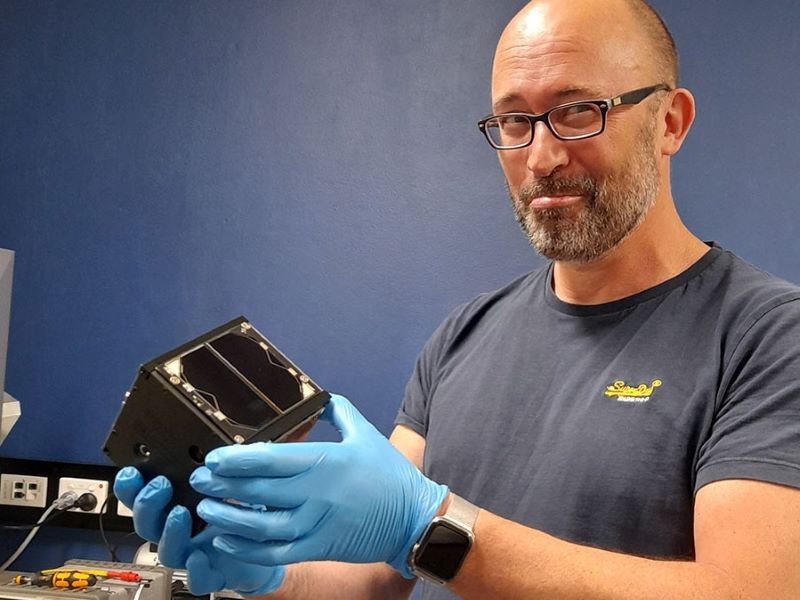A small satellite made from scratch in Western Australia will be aboard a SpaceX rocket that launches from the US on Saturday, representing the state’s first space mission in the local sector’s 60-year history.
Developed by a team of students and engineers at Curtin University’s Space Science and Technology Centre, the Binar-1 integrated satellite will be part of the SpaceX CRS-23 commercial resupply mission to the International Space Station, and be deployed to capture data for an expected 18 months in orbit.

Launching from Cape Canaveral in the United States on Saturday afternoon, the 10cm cube satellite will be delivered to the Japanese module of the station, roughly 400 km above Earth. It will then be deployed to orbit earth at a similar altitude, collecting data as it falls into the atmosphere.
“In the end it will become a fireball, like its namesake, and if we are extremely lucky we will catch images of it on one of our ground-based observatories,” said Curtin University PhD candidate Ben Hartig, writing about the project in The Conversation
“We expect this to happen after about 18 months, but this time frame can vary because of many factors, such as solar weather. For as long as we can, we will gather data to help refine future missions, and we have already begun to look at ways to collect data as the next satellites crash into the atmosphere.”
Binar-1 has two cameras to photograph Western Australia and to image stars. The star imaging is a critical part of testing the satellite and is expected to inform any future Moon mission. It is named after the Noongar word for “fireball”, in acknowledgment of the Wadjuk people of the Noongar Nation and the university’s long-running Desert Fireball Network.
The Western Australia government said the satellite technology will become the most validated and flight-proven Australian spacecraft, and position the state as a leader in the development and operation of active spacecraft.
“Western Australia is about to make history with the State’s first space mission,” said WA Premier Mark McGowan.
“I am immensely proud of the students and engineers who have developed this amazing technology which opens so many doors for future missions and collaboration with the public and private sectors.”
Mr McGowan said the state government had invested $500,000 in the Binar program as part of a $6 million commitment to the state’s space sector since 2020.
Curtin University’s Space Science and Technology Centre is the largest planetary research group in the southern hemisphere and has been involved in missions with foreign space agencies before, including NASA.
The centre has quickly realised the cost of buying the satellite hardware repeatedly would be prohibitive and has begun making satellites, including Binar-1, from scratch.
“Our satellite was designed and built completely in-house, which means we can drive down costs by making multiple versions, while constantly testing and refining our hardware for future missions,” said Mr Hartig.
“There are already six more 1U satellites scheduled in the Binar program, each representing a step towards our ultimate goal of a lunar mission.”
A second satellite known as CUAVA-1 and built by the Australian Research Council’s CubeSat development program will also be on board SpaceX’s Saturday launch. CUVA01 will also conduct Earth and star observations while testing new instruments.
WA Science Minister Roger Cook encouraged people in Western Australia to tune in to the historic launch on Saturday.
“Binar-1 will take Australia into space and is a huge milestone for WA’s rich 60-year history in the space sector,” he said.
“This will be such a pivotal moment for our State – and is set to inspire future generations of scientists, engineers and astronauts.”
Do you know more? Contact James Riley via Email.

